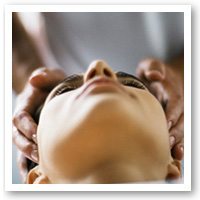Chiropractic: Myths and misconceptions.
 Like all modern healthcare, Chiropractic techniques are constantly changing with the times. Just as your GP no longer applies leeches to you, Chiropractors have updates their techniques for improved results and experiences. Here are some common myths debunked…
Like all modern healthcare, Chiropractic techniques are constantly changing with the times. Just as your GP no longer applies leeches to you, Chiropractors have updates their techniques for improved results and experiences. Here are some common myths debunked…
Once I see a Chiropractor I will have to keep going back.
Our aim is to help you get rid of your symptoms and also keep them away. We give recommendations as to what would be the best course of treatments to achieve both goals.
It may occur that after a few visits you feel improved but are asked to come back for a follow up treatment, this is because the pain or discomfort is one of the last signs or symptoms to come on and the first to disappear. These signs may have disappeared but the imbalance that caused the problem and hence the pain, may still be there to some degree. If this imbalance that is left over is not corrected it can progress again, and the symptoms will return. At Health In The Bay we incorporate different techniques that have been found to be effective in changing your body out of old patterns, which allows the body to become stable and hence need less treatments overall.
We may also recommend that you return for maintenance. It is a good idea to have occasional maintenance treatments as this helps correct any problems before they become symptomatic, and the earlier they are addressed they quicker they resolve.
Adjustments hurt.
Chiropractic adjustments generally don’t hurt. When having a manual adjustment you may hear a crack, which may be surprising if you haven’t experienced it before. This is not bone rubbing against bone or anything similar, it is just the fluid that naturally sits inside the joint, releasing a gas due to the change in pressure. Using the tool called an Activator is even more gentle. It is a tool that gives a small push to the joint in a specific direction, but no crack is heard. The adjustments themselves don’t hurt, but often you have come to see the chiropractor because of some pain you are experiencing, and as chiropractic is a hands on technique, the chiropractor will be working at the area of pain and hence it may be tender.
Chiropractic adjustments are dangerous.
Chiropractors study at University a minimum of 5 years which includes in-depth study of the anatomy and neurology of the whole body as well as adjusting techniques. With this knowledge any risk is minimised. There is a very small risk with manual neck adjustments, but this is only in those already predisposed to circulation problems. By taking a thorough history we can ascertain if there is some risk, and adapt the treatment accordingly. We also conduct screen tests prior to adjusting, if this indicates a potential risk we will not perform the adjustment. If we are happy there is no risk, but you are still not comfortable with the idea of being adjusted manually we can use a different method that does not involve cracking.
There is also a risk of mild soreness after a treatment, which is due to the body changing and adjusting. This is usually only with the first treatment as the body is getting used to these changes, and would only last one to two days.
Chiropractors only treat the spine.
Chiropractors study the anatomy and adjustment techniques of the whole body. It is true that the majority of what we treat is the spine, but that is not all we treat. We commonly treat other non-spinal joints, which can be symptomatic due to their relationship with the spine, or due to injuries. Common problems treated include RSI of the wrist, shoulder pain or stiffness, sprained ankles, or wrists, shin splints, generalised knee pain (often noticed when walking up and down stairs) unexplained knee swelling, dropped arches of the feet, plantar fasciitis, and more.








